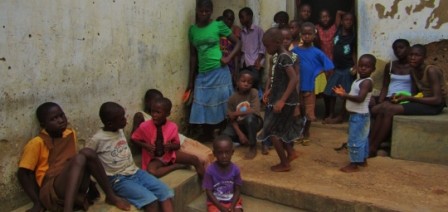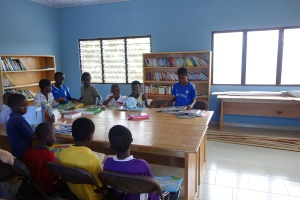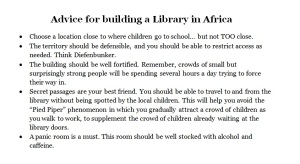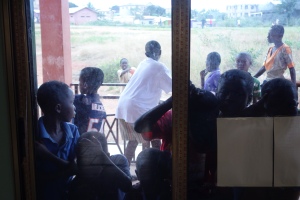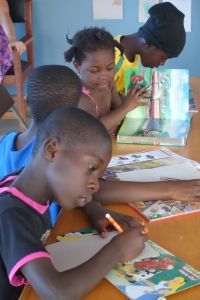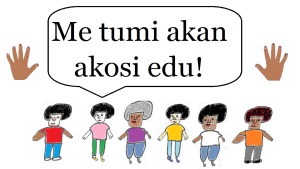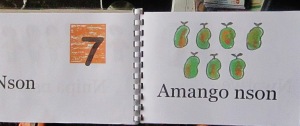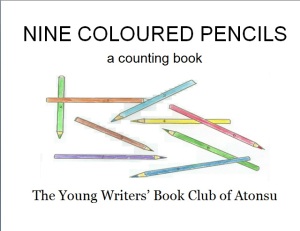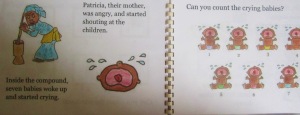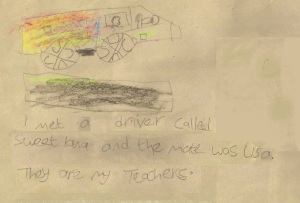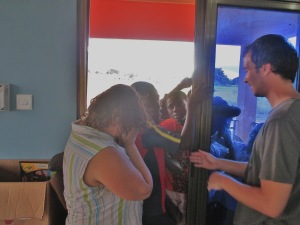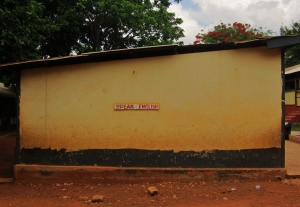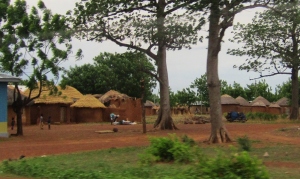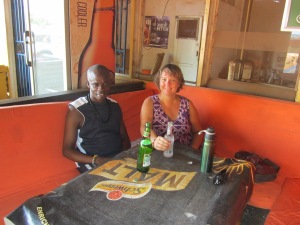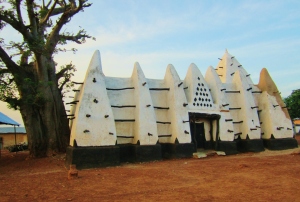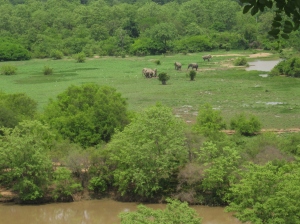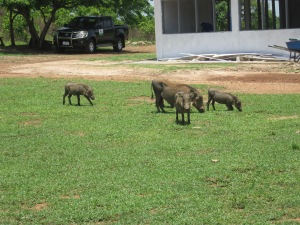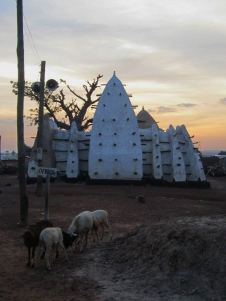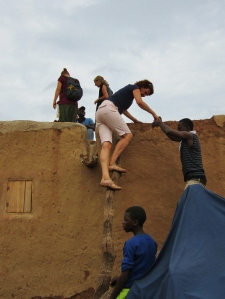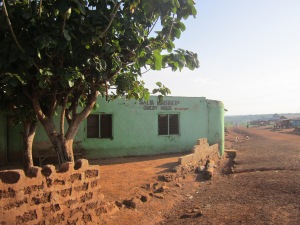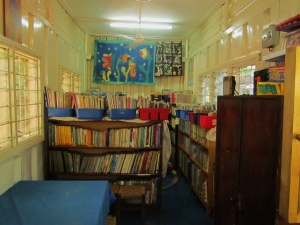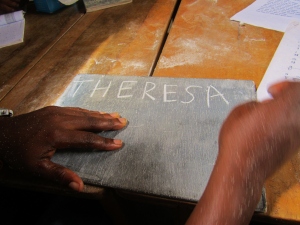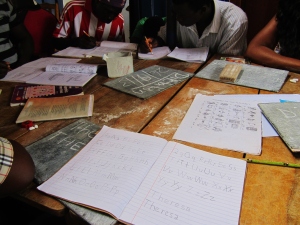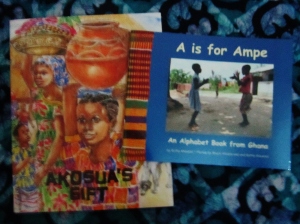The kids are (mostly) back in school, the international volunteers have gone home, and the library/computer lab is thus no longer open all day every weekday. I finally have a chance to catch my breath, do my laundry, and reflect on the past two months.
The library has been an unexpected hit with the students. I was not involved in the design process, but I imagine that Rebecca and the architect tried to design a welcoming space that would engage with the local people and draw kids in – big windows, sliding glass doors, and a location surrounded by schools.
In retrospect, maybe an underground bunker would have been a better design.
Naively, I thought that I would have a group of five to ten teenagers for the first run of my Young Writers’ Book Club program. We would meet for an hour, three times a week, read some books and write some stories and poems. Otherwise, the place would be more or less deserted. Once the library was open full-time, maybe the occasional nerdy kid would want to come in and read for a bit, but I would be able to get work done while minding the library. We thought we might be able to use the big spaces in the library and computer lab to do volunteer orientations and even other programs like art classes.
Instead, we got this.
None of us, neither the Ghanaian staff nor the foreigners, could have foreseen this. Children were literally trying to break the doors down in order to get into both the library and the computer lab. Surely, we thought, once they get inside and realise it’s just a bunch of books, the interest in the library at least will die down to a reasonable level.
At the beginning of the summer, I was working with a Hong Kong volunteer named Janice. She came prepared to teach creative writing to older kids, and had done some lesson plans accordingly. She started working with a group of (theoretically) three teenagers, but their attendance was irregular and they soon stopped coming altogether. Meanwhile I had started with a group of nine to twelve year olds after school. I too had prepared all my lesson plans and reading materials with an older group in mind, but young teenagers didn’t seem to be materializing. Janice and I joined forces to work with this group, and were soon joined by Sweetlana, an intern from Dubai. Both Janice and Sweetlana took a lot of initiative and came up with creative yet simple ideas for working with the group.
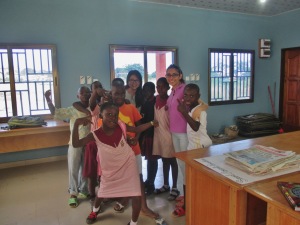 Janice and Sweetlana with the Young Writers’ Book Club
Janice and Sweetlana with the Young Writers’ Book Club
Meanwhile, hordes of children were still trying to break down the library doors every day, and begging to join the group. We decided to open the library during the day, allowing ten kids in at a time for one hour. We did not follow a curriculum with these groups; they simply looked at the books and sometimes drew pictures. Soon, we realized that most of them were not interested in reading the words in the books at all. So we started going around the room and taking a few minutes to read with each child that came in. In some cases, we were able to find books that were easy enough for the child to read. Otherwise, we just read to them and talked about the pictures with them. We also gave them time to do what they really wanted to do, which was look at the books and draw their own pictures.
The Young Writers’ Book Club was meeting three afternoons a week for an hour. The reading part of the program was complicated by the fact that vastly different levels of reading ability were represented in the group. We had enough volunteers to work with the kids individually and in small groups, and also read stories to them at the end of the sessions. This seemed to work, at least for a while.
Getting them to write also proved challenging. Most of them were not clear on what exactly a sentence was. Janice showed them how to fold a sheet of paper into a 6-page booklet and had them write something and draw a picture on each page. This helped them break up their ideas into sentence-sized bits.
I really wanted to self-publish a picture book with the kids as soon as possible, as I guessed that they would be inspired by the fact that they could write an actual book, like the ones in the library, that other people could use.
So far, we have desktop-published a few picture books. One is a counting book in Twi, illustrated by the students:
 It has ended up being a useful part of our collection.
It has ended up being a useful part of our collection.
One is a counting book in English, with a story that was brainstormed by the group, and illustrated by me. I named the characters after the kids who wrote the story:
We brainstormed another story. This time the kids drew the pictures and had to write their section of the story with correct grammar and spelling:
After Janice left for Hong Kong, we were very fortunate to be joined by another volunteer, Georg, from Germany. His patience, energy and commitment allowed us to continue the program even after Sweetlana left us. During the last week of August, only Georg and I were left to run both the library and the computer lab. We were both pretty burnt out by the end.
My next task is to take what I have learned and try to make some plans for the future. In some ways, my experience this summer has confirmed what I suspected.
- Most students in Ghana struggle at a very basic level with reading and writing. The ones who succeed either have an unusually high aptitude, or they come from the most affluent families and attend the best schools.
- The fact that virtually everyone, including the teachers, speaks English at school and a different language in the rest of their lives is problematic, and creates a barrier to literacy and learning.
- I still believe that it is not fair to put the whole burden of literacy and other “academic” skills on the school system. Children should also have the opportunity to learn in both structured and unstructured environments outside of school.
I also changed my mind about a few things after this experiment.
- We need to work with younger children. From junior high school going, the students are always in school, even on Saturdays and during vacation time. They have no time for extracurricular activities.
- There need to be culturally and linguistically appropriate, entertaining reading materials available for younger children. If these materials exist, they are not reaching the children who need them.
- Authors, librarians, NGO’s and educators need to coordinate their efforts, or at least be aware of each other’s efforts. As in other areas of development, we keep reinventing the wheel, and then not maintaining it.
More specifically, Light for Children and I need to figure out how to use the library we have in cooperation with the schools. I also have to design reading and writing programs that volunteers can run in the library, and maybe even a travelling version to be brought to villages.
Also, Mike Owusu (of Light for Children) and I are collaborating to write a picture book in Twi and English.
But first… laundry.
